Aristocratic Bovines Masterpiece Wall Art & Canvas Print
Aristocratic Bovines Masterpiece Wall Art & Canvas Print
Couldn't load pickup availability
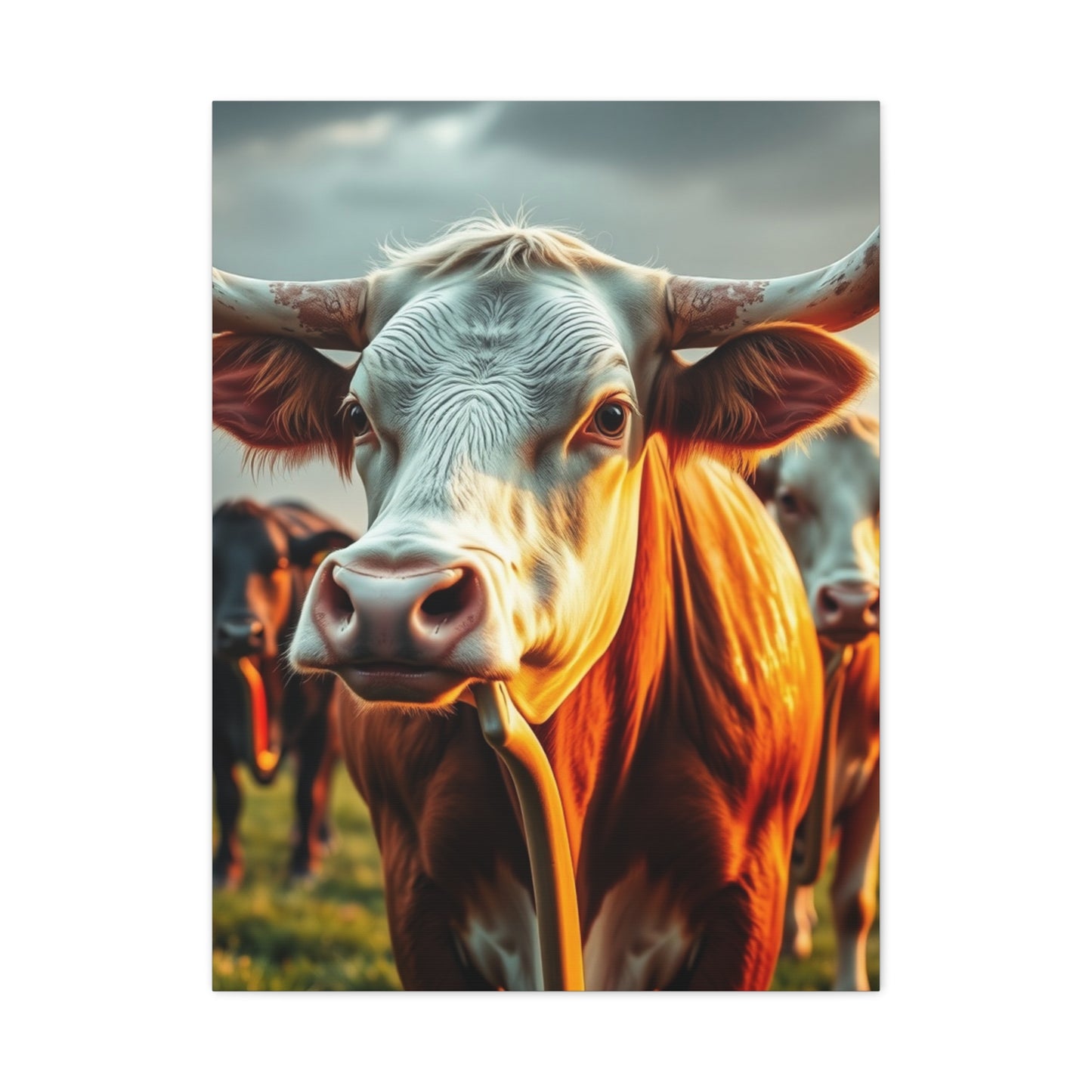
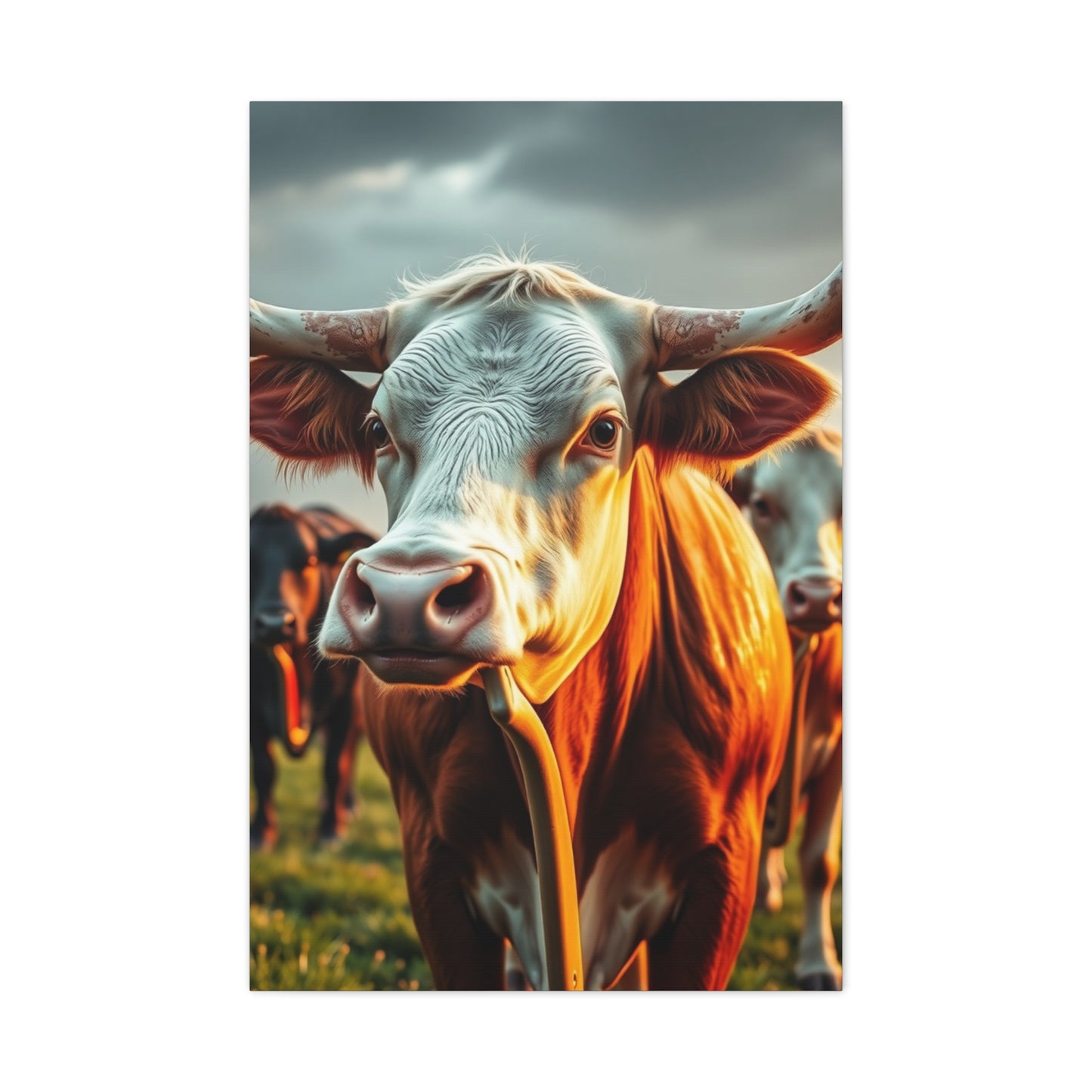
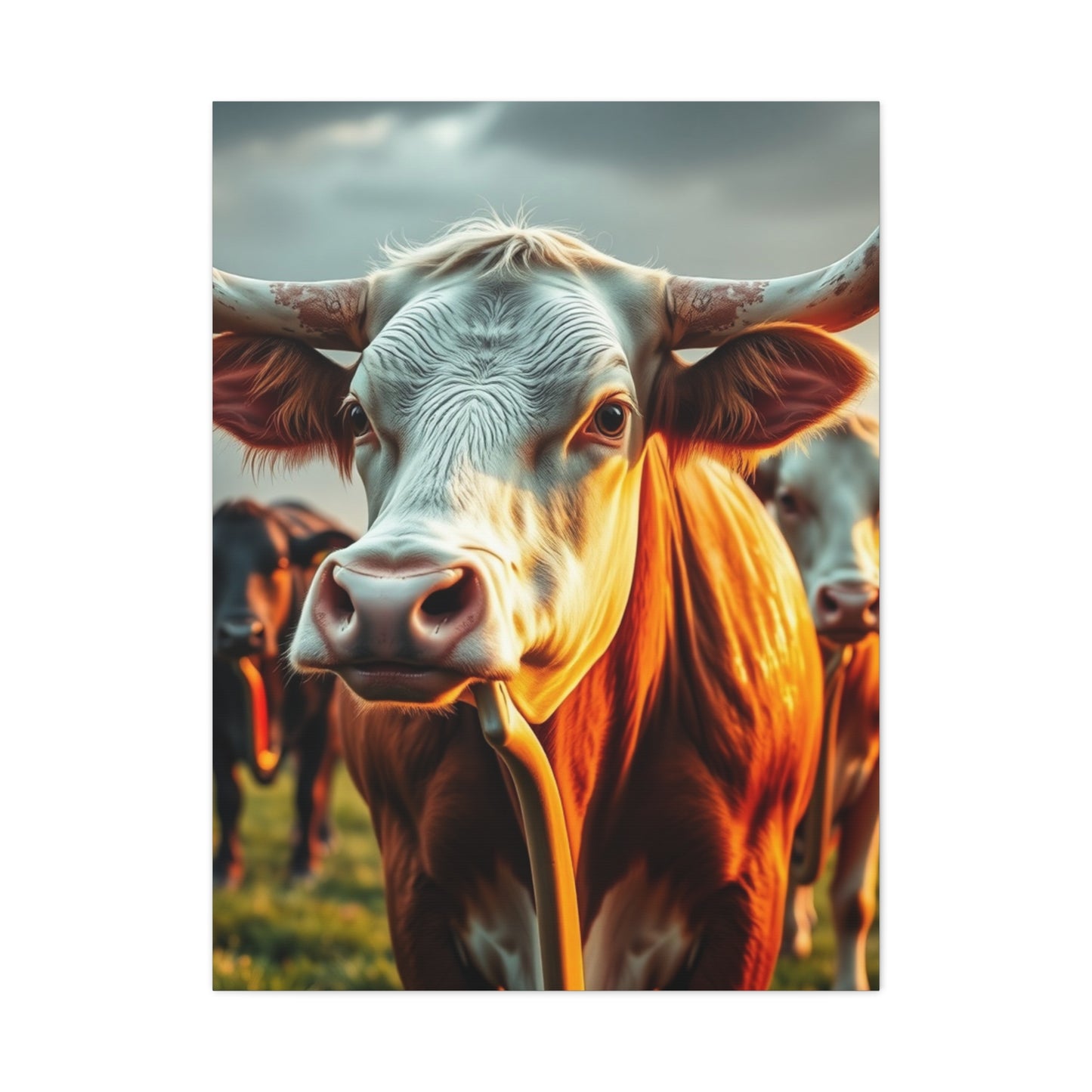
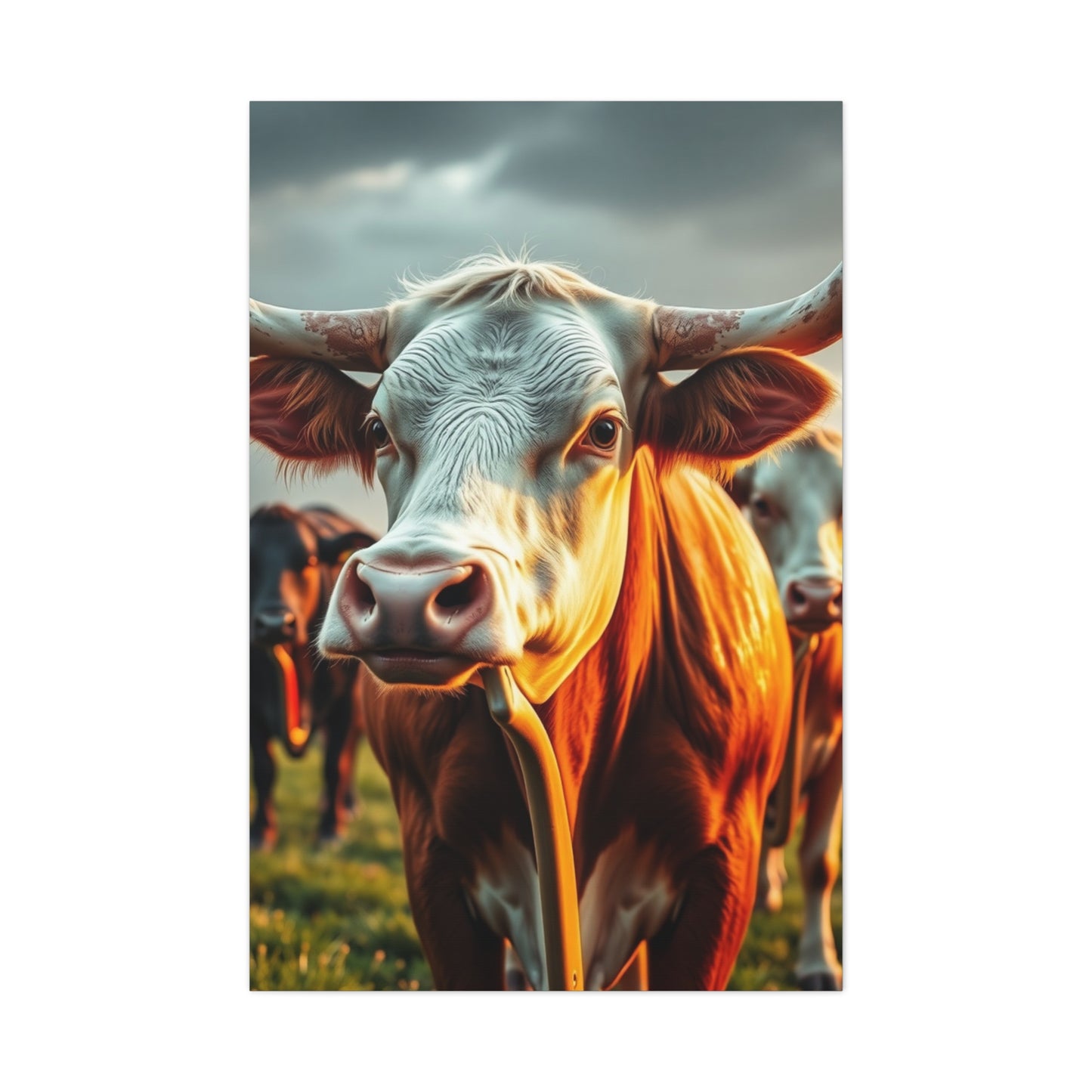


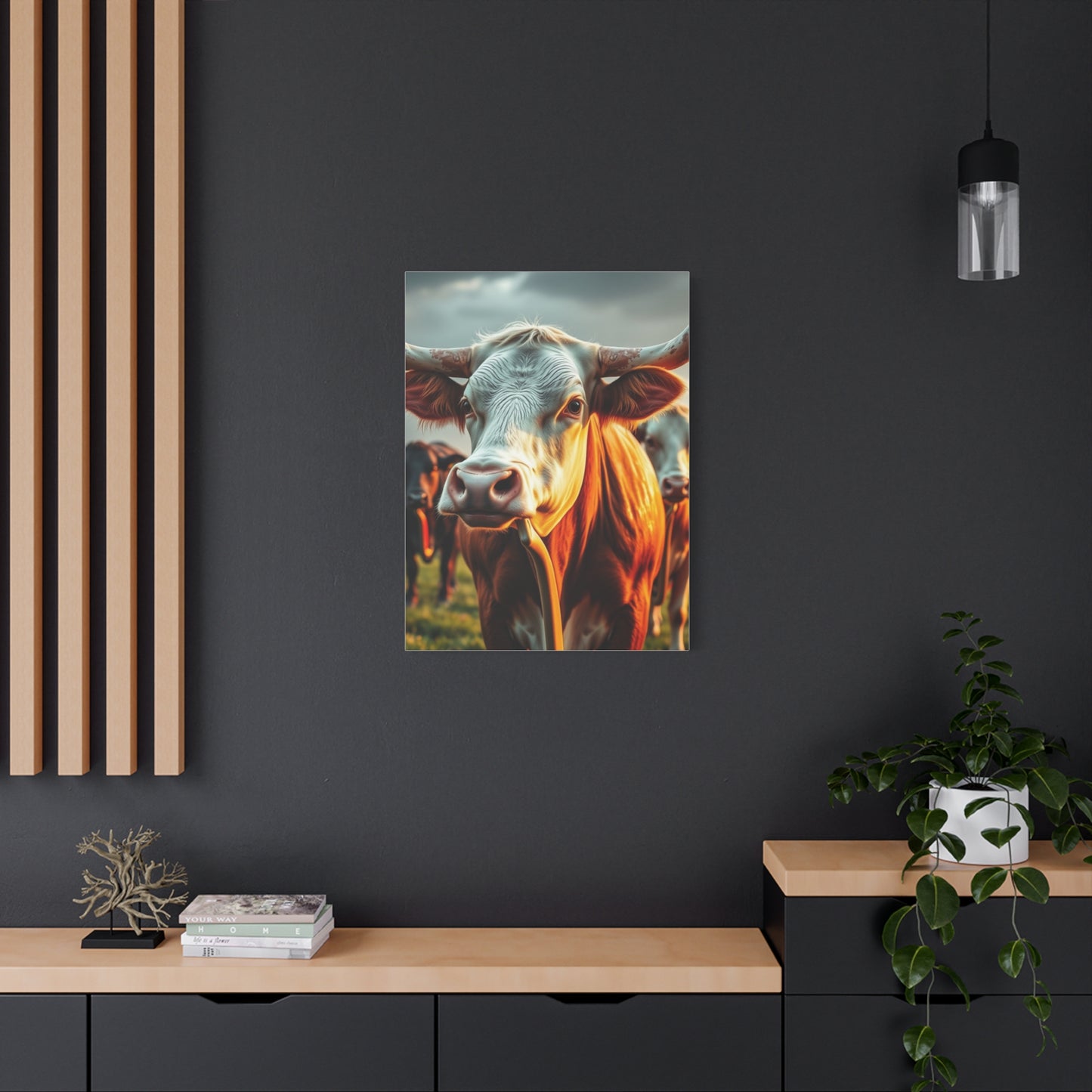
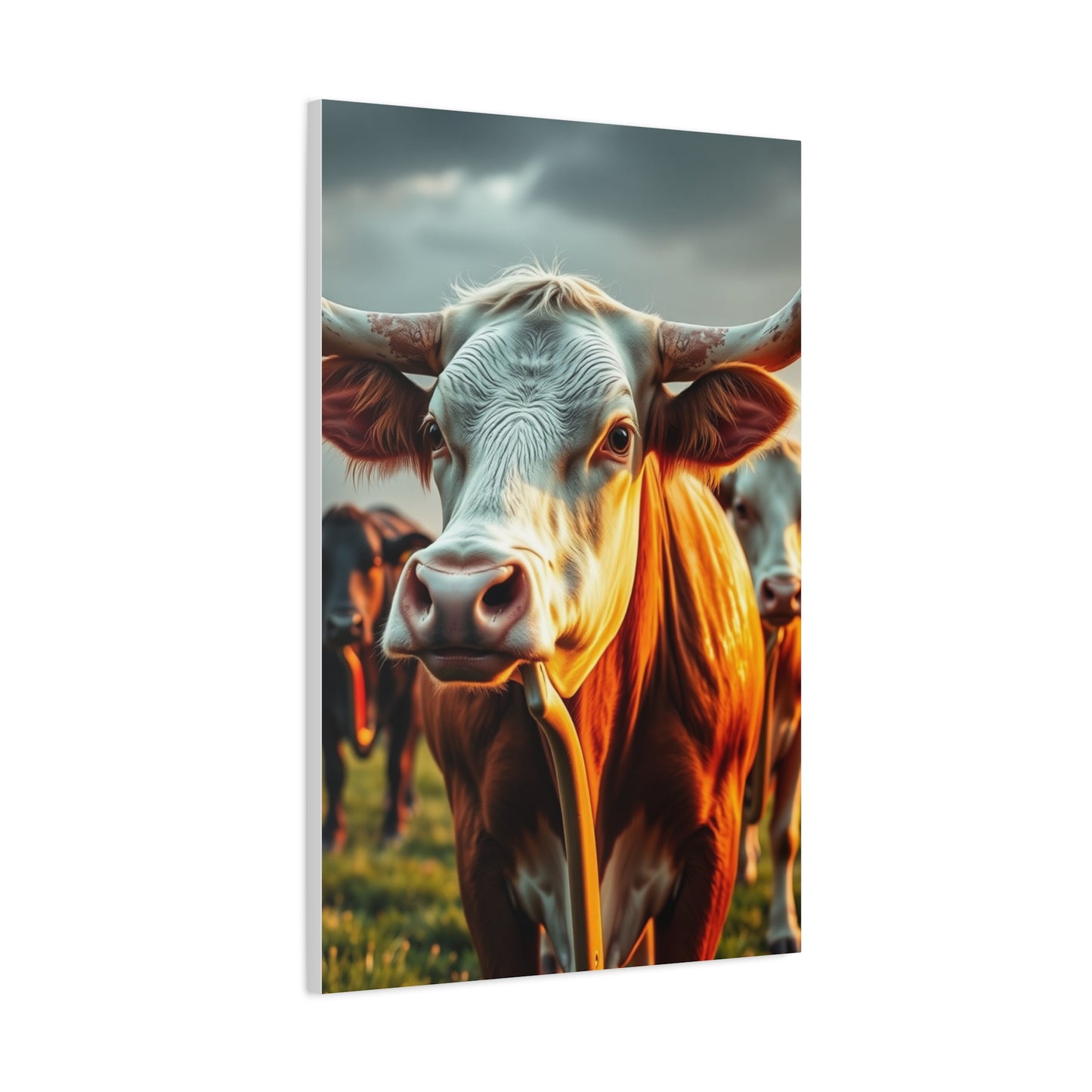
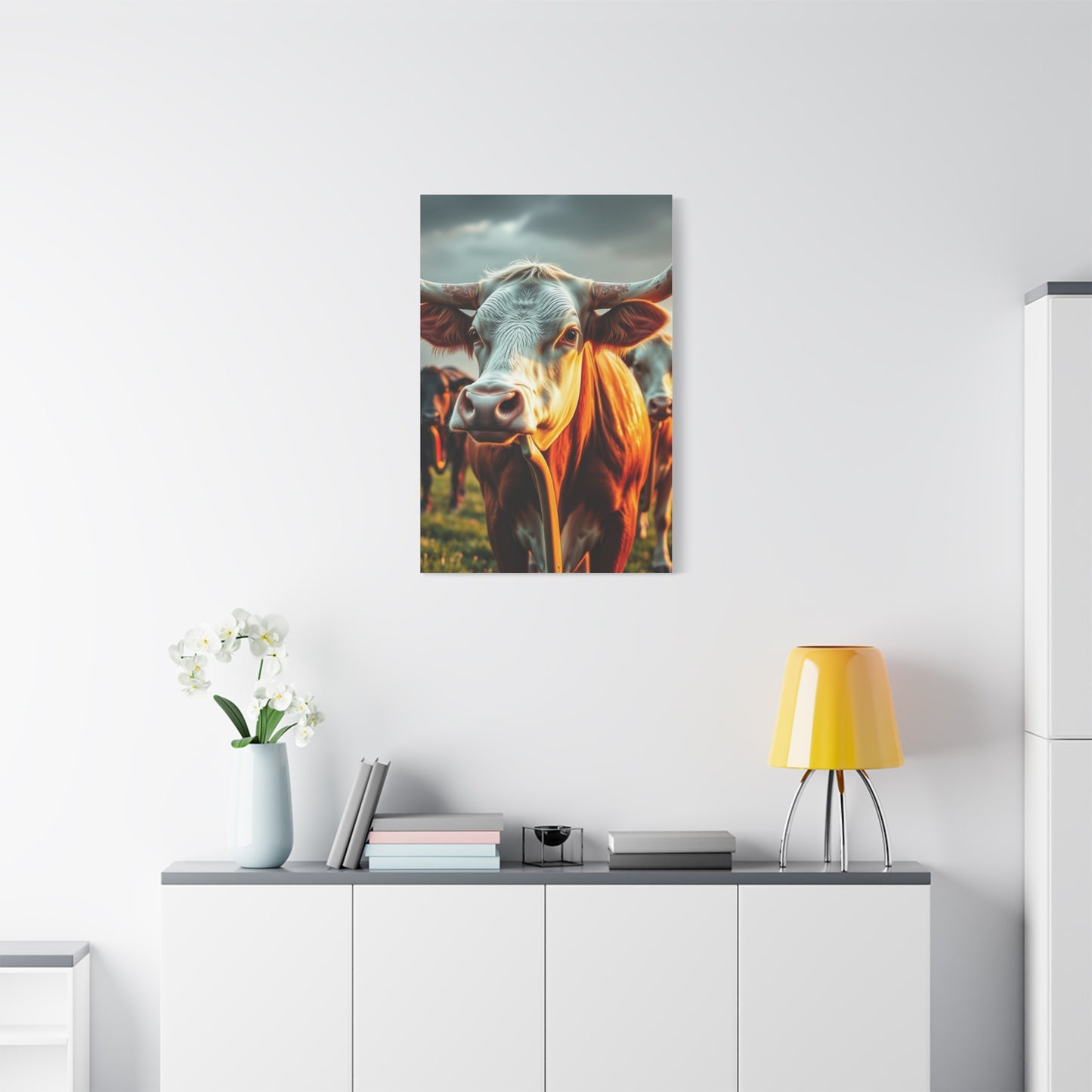
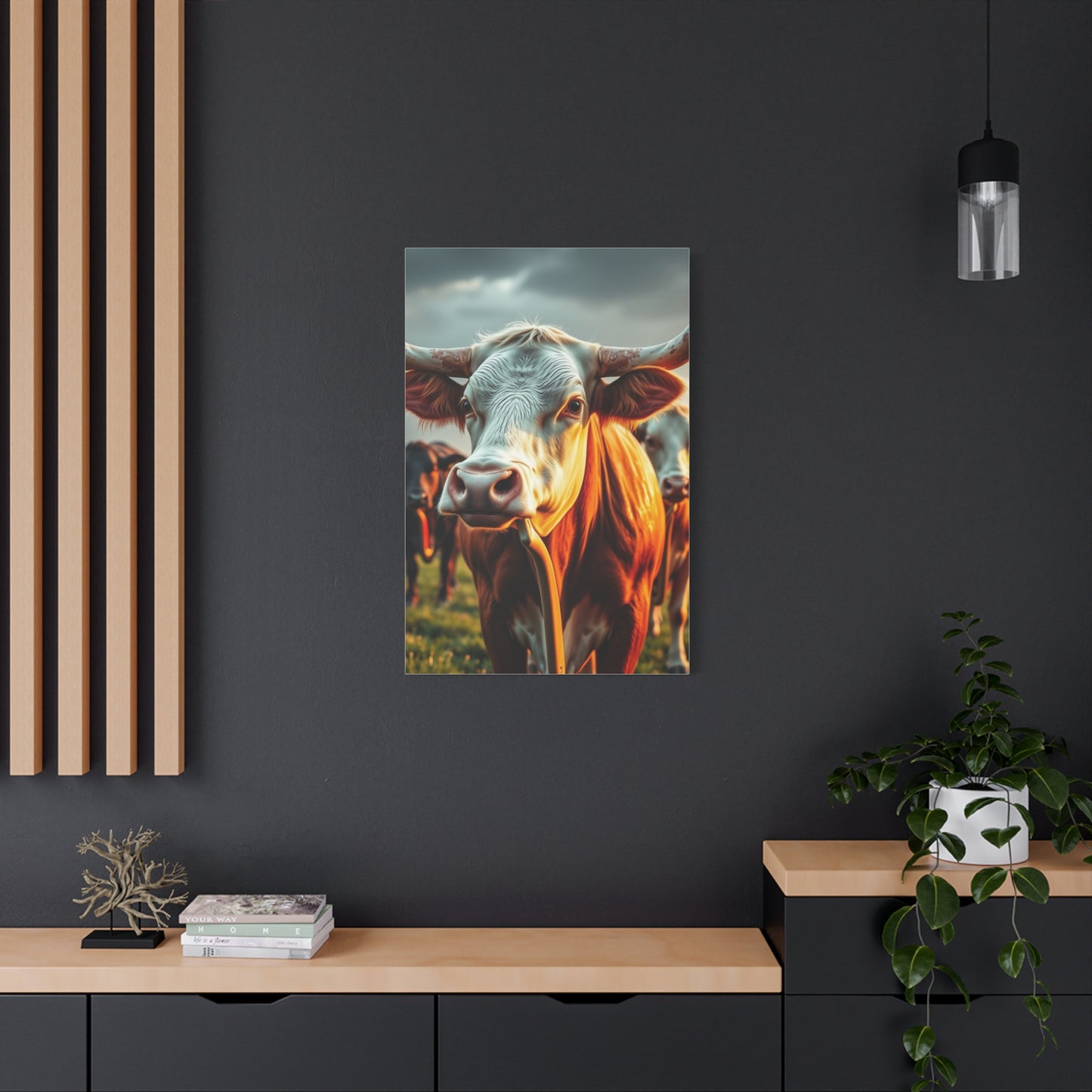

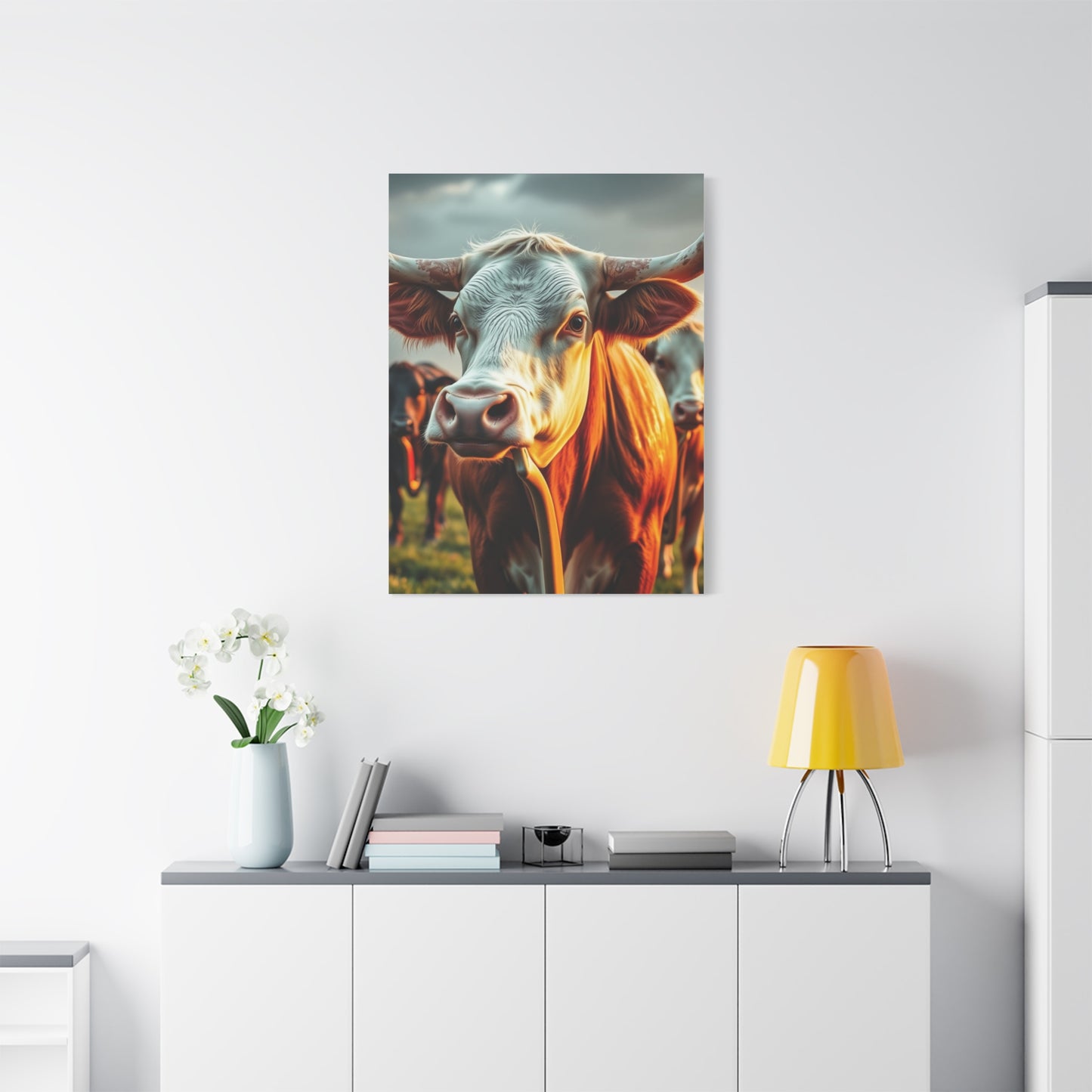


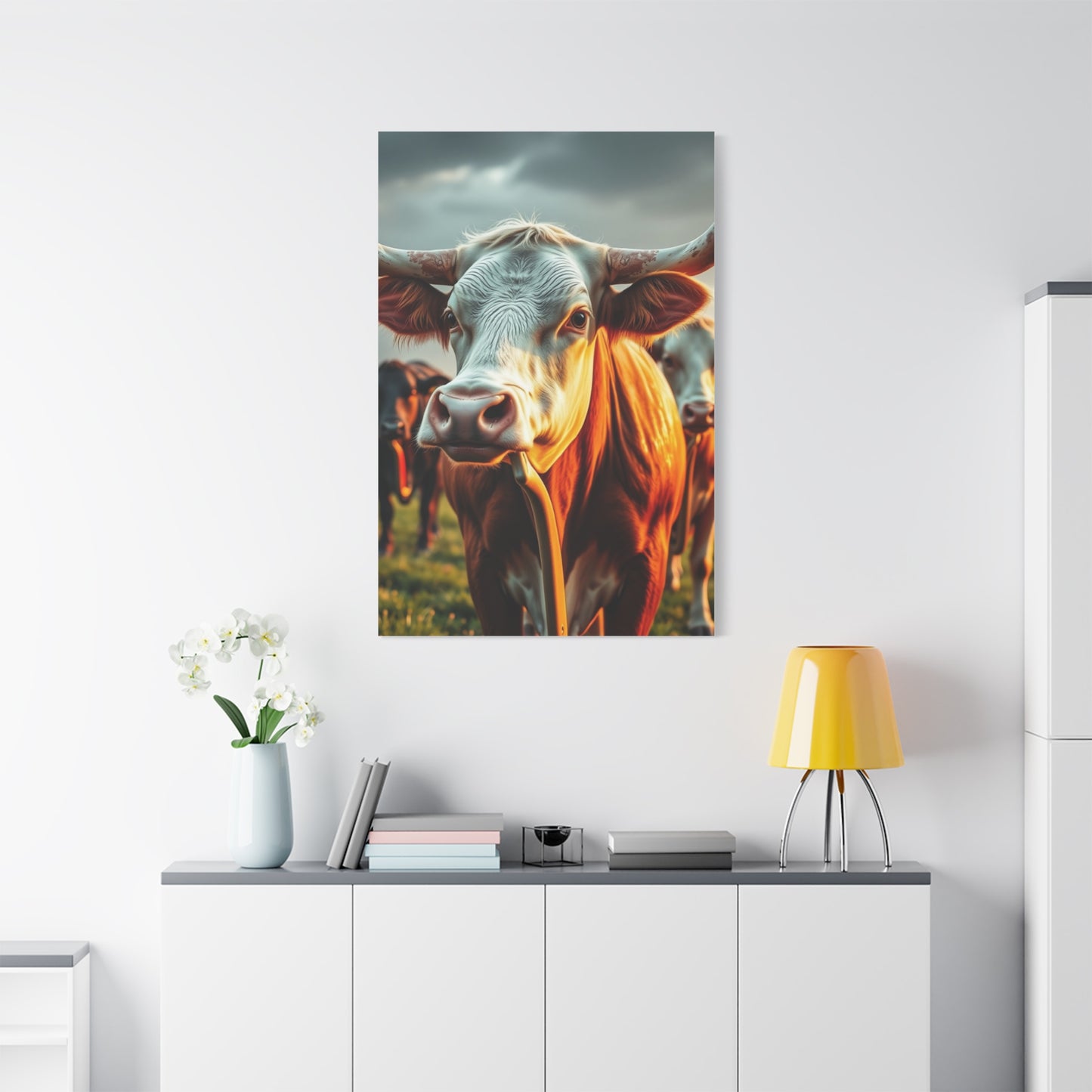
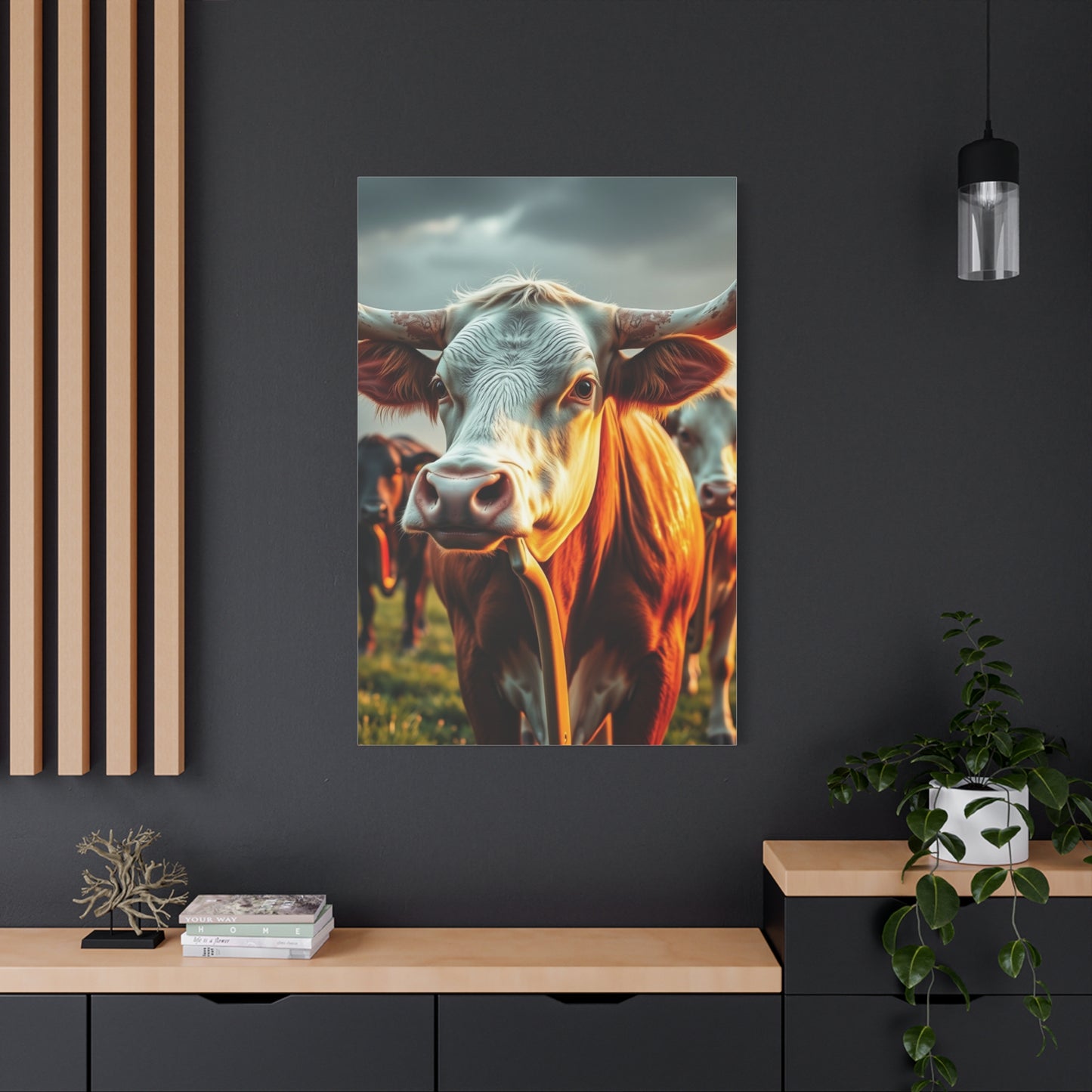
Regal Pastures: How Aristocratic Bovines Masterpiece Wall Art Elevates Farmhouse Style
The world of interior design has witnessed a fascinating evolution in recent years, with unconventional art themes capturing the imagination of homeowners and decorators alike. Among these emerging trends, distinguished bovine portraiture has emerged as a captivating choice for those seeking to infuse their living spaces with character, sophistication, and a touch of whimsy. These remarkable pieces featuring cattle adorned in aristocratic attire have transcended traditional farmhouse aesthetics, establishing themselves as statement pieces suitable for diverse interior styles ranging from contemporary urban lofts to classic country estates.
The appeal of these artistic representations lies in their unique ability to blend humor with elegance, creating conversation pieces that simultaneously celebrate pastoral heritage while embracing refined artistic expression. These canvases showcase bovines dressed in period clothing, adorned with jewels, and positioned in dignified poses reminiscent of classical portraiture from centuries past. The juxtaposition of humble farm animals with noble trappings creates an intriguing visual narrative that challenges conventional artistic boundaries while maintaining aesthetic sophistication.
Contemporary artists and printmakers have embraced this genre with remarkable creativity, producing works that range from photorealistic renderings to impressionistic interpretations. Each piece tells a unique story, transforming ordinary cattle into characters of distinction and pedigree. The meticulous attention to detail in these artworks, from the texture of luxurious fabrics to the glint of ornamental accessories, demonstrates the serious craftsmanship behind what might initially appear as playful subject matter.
For homeowners seeking to make bold design statements, these canvas prints offer versatility that few other art forms can match. They serve as focal points in living rooms, add personality to dining areas, create warmth in bedrooms, and inject character into home offices. The inherent charm of these pieces makes them particularly effective at softening minimalist spaces while adding depth to more traditional environments.
The Cultural Phenomenon Behind Distinguished Bovine Artwork
The emergence of cattle portrayed in aristocratic settings reflects broader cultural movements within contemporary art and design. This phenomenon draws inspiration from historical artistic traditions where animals were often anthropomorphized to comment on society, human nature, and class structures. Renaissance and Baroque painters occasionally included animals in their compositions to symbolize various virtues or characteristics, though rarely as central subjects dressed in human attire.
The modern iteration of this concept gained momentum through social media platforms and online art communities, where artists began experimenting with reimagining farm animals as nobility. The unexpected combination of rustic subjects with refined presentation resonated with audiences seeking art that challenged conventions while remaining accessible and engaging. Unlike abstract or highly conceptual pieces that may require extensive interpretation, these bovine portraits communicate immediately through their visual wit and craftsmanship.
This artistic movement also represents a celebration of agricultural heritage in an increasingly urbanized world. Many contemporary viewers, particularly those living in cities, maintain romantic connections to rural life and farming traditions. These artworks allow them to honor that connection while maintaining sophisticated aesthetic standards. The cattle featured in these pieces become ambassadors of pastoral life, elevated to positions of honor and respect through artistic interpretation.
Furthermore, the popularity of this genre speaks to changing attitudes about decorative art in residential spaces. Modern consumers increasingly seek pieces that reflect personality and individuality rather than adhering strictly to established design conventions. Distinguished bovine artwork provides exactly this opportunity, allowing homeowners to demonstrate their appreciation for both artistic quality and lighthearted creativity. The pieces signal cultural awareness and artistic confidence, suggesting owners who refuse to take themselves too seriously while maintaining high standards for their surroundings.
Historical Influences Shaping Contemporary Cattle Portraiture
To fully appreciate the artistic merit of modern bovine canvas prints, one must examine the rich historical traditions that inform their creation. Classical portraiture from the 17th through 19th centuries established conventions for depicting subjects of status and importance. Formal poses, luxurious clothing, symbolic accessories, and carefully composed backgrounds all served to communicate the subject's position in society. Portrait painters developed sophisticated techniques for rendering fabrics, jewels, and other markers of wealth with remarkable realism.
These conventions are deliberately referenced and playfully subverted in contemporary cattle artwork. The animals are positioned using classical portrait compositions, often featuring three-quarter views or dignified frontal presentations. Their attire mirrors historical fashion from various periods, including Elizabethan ruffs, Georgian military uniforms, Victorian finery, and Edwardian elegance. The backgrounds frequently echo traditional portrait settings, with rich draperies, architectural elements, or pastoral landscapes visible behind the subject.
This historical referencing adds layers of meaning to what might otherwise be dismissed as novelty art. Viewers familiar with art history recognize the deliberate citations of specific painting styles and conventions, creating an additional dimension of appreciation. The works function simultaneously as homage to and gentle parody of portraiture traditions, walking a delicate line between reverence and irreverence.
Additionally, the agricultural paintings of the 18th and 19th centuries provide another historical foundation for this genre. During this period, landowners commissioned paintings of their prize livestock as demonstrations of their agricultural expertise and breeding programs. These animal portraits were taken quite seriously and displayed prominently in estates. Contemporary aristocratic bovine art can be seen as a continuation of this tradition, though with significantly more creative liberty regarding presentation and interpretation.
Artistic Techniques Employed in Canvas Print Production
The creation of high-quality bovine canvas artwork involves multiple artistic disciplines and technical processes. Many contemporary pieces begin with digital painting or photo manipulation, allowing artists to achieve extraordinary detail and control over composition. Digital tools enable the seamless integration of animal subjects with clothing elements, accessories, and backgrounds that would be impossible to create through traditional means.
Artists working in this genre must possess strong foundational skills in both animal anatomy and figure drawing. Accurately rendering the bovine form, including distinctive features like bone structure, musculature, and proportions, requires careful observation and technical proficiency. The cattle must remain recognizable and anatomically correct even when adorned with human clothing, maintaining the visual integrity that makes these pieces compelling rather than merely absurd.
Color theory plays a crucial role in creating successful compositions. Artists must balance the natural earth tones of cattle coloring with the rich hues of aristocratic attire and backgrounds. Complementary color schemes enhance visual impact, while careful attention to value relationships ensures that subjects stand out from their surroundings. Metallic accents representing jewelry or military decorations add points of visual interest and authenticity to the historical clothing elements.
The translation of digital artwork to canvas prints requires additional technical consideration. Professional-grade printing processes use archival inks and high-resolution files to ensure longevity and color accuracy. The canvas material itself contributes to the final aesthetic, with texture adding dimension and visual interest to the printed image. Gallery-wrap stretching techniques, where the image continues around the sides of the frame, create a finished appearance suitable for display without additional framing.
Design Versatility Across Various Interior Styles
One of the most remarkable aspects of distinguished cattle artwork is its adaptability to diverse decorating schemes. In modern farmhouse interiors, these pieces provide an updated take on agricultural themes, replacing traditional cow imagery with more sophisticated representations. The combination of rustic subject matter and refined presentation perfectly encapsulates the farmhouse aesthetic, which seeks to blend country charm with contemporary elegance.
For industrial and urban loft spaces, these artworks introduce organic elements and warmth to environments often characterized by exposed brick, metal, and concrete. The textural quality of canvas complements industrial materials, while the subject matter provides a humanizing contrast to stark architectural features. Large-scale prints make particularly powerful statements in these open-plan spaces, serving as anchor points for furniture arrangements and color schemes.
Traditional and classical interiors benefit from the historical references embedded in aristocratic cattle portraits. The formal compositions and period costumes harmonize with antique furnishings, ornate moldings, and classic color palettes. These pieces can be displayed alongside genuine historical artworks without appearing discordant, as they respect and reference the same artistic conventions. The playful nature of the subject matter prevents traditional spaces from feeling stuffy or overly formal.
Eclectic and bohemian interiors find particular synergy with this art form, as both embrace unexpected combinations and celebrate individuality. The whimsical nature of dressed cattle aligns with eclectic design principles that encourage mixing patterns, textures, and styles. These pieces contribute to the collected-over-time appearance that defines successful eclectic spaces, suggesting interesting stories and diverse influences.
Even minimalist interiors can accommodate selected bovine portraits, particularly when choosing pieces with simplified color palettes or more restrained presentations. A single large canvas featuring a cattle subject against a neutral background can provide the focal point a minimalist room requires without cluttering the visual space. The organic form of the animal adds necessary visual interest to environments defined by clean lines and geometric shapes.
Palette Selection for Bovine Canvas Art
Understanding color psychology enhances the selection process when choosing cattle artwork for specific spaces. Different color palettes evoke distinct emotional responses and create varying atmospheric effects within rooms. Pieces dominated by warm tones including rich browns, deep reds, and golden yellows create cozy, welcoming environments. These warm palettes work particularly well in gathering spaces like living rooms and dining areas, where fostering connection and comfort is paramount.
Cool-toned pieces featuring blues, grays, and silvery accents produce calming, serene atmospheres suitable for bedrooms and personal retreats. These cooler palettes can also create sophisticated, refined ambiances in formal spaces. The natural coloring of certain cattle breeds lends itself beautifully to these cooler schemes, particularly when paired with silver or blue-toned aristocratic attire.
Neutral-based artworks featuring blacks, whites, grays, and taupes offer maximum versatility and timelessness. These pieces integrate seamlessly with existing color schemes and adapt as design preferences evolve. Neutral cattle portraits work exceptionally well in spaces where other elements provide color, allowing the artwork to complement rather than compete with furnishings, textiles, and accessories.
Jewel-toned pieces incorporating emerald greens, sapphire blues, ruby reds, and amethyst purples make dramatic statements and elevate the perceived luxury of spaces. These saturated colors reference the genuine gemstones often depicted in aristocratic portraiture, enhancing the theme of nobility and refinement. Jewel tones work particularly well against neutral walls and furnishings, creating striking visual contrast.
The psychological impact of color extends beyond mood to influence perceived space dimensions. Lighter-toned artworks can make small rooms feel more spacious and airy, while darker pieces add intimacy and coziness to larger areas. The distribution of color within the composition also affects visual weight and balance, with darker elements appearing heavier and lighter areas seeming to recede.
Size Considerations and Spatial Planning for Canvas Displays
Selecting appropriately sized canvas prints significantly impacts their effectiveness within spaces. Oversized pieces measuring 40 by 60 inches or larger make commanding statements suitable for prominent walls in living rooms, above sofas, or in entryways. These large-scale works function as focal points around which entire room designs can be built. The substantial presence of oversized bovine portraits ensures they receive appropriate attention and justifies the artistic investment.
Medium-sized canvases ranging from 24 by 36 inches to 36 by 48 inches offer versatility for various applications. These dimensions work well above furniture pieces, in hallways, as part of gallery walls, or in bedrooms. Medium pieces provide sufficient visual impact without overwhelming spaces, making them suitable for both primary and secondary display locations. They also allow for easier arrangement when creating grouped displays with multiple related pieces.
Smaller canvases measuring 16 by 20 inches or 18 by 24 inches serve well in intimate spaces, bathrooms, home offices, or as part of larger arrangements. These compact pieces bring the charm of aristocratic cattle imagery to areas where larger works would feel disproportionate. Multiple small canvases can be arranged in grids or asymmetrical groupings to create custom installations tailored to specific wall dimensions.
Proper proportion between artwork and wall space follows established design principles. Generally, art should occupy between two-thirds to three-quarters of the available wall width to achieve visual balance. When hanging pieces above furniture, the artwork should measure approximately two-thirds the width of the furniture piece. These guidelines ensure artwork feels appropriately scaled rather than appearing lost on expansive walls or crowding smaller spaces.
Vertical versus horizontal orientations suit different architectural features and design objectives. Vertical pieces emphasize ceiling height and work well in spaces with tall proportions or when flanking windows and doorways. Horizontal orientations complement long walls, work effectively above sofas and beds, and can visually widen narrow spaces. Portrait-oriented cattle imagery naturally suits vertical formats, though many compositions adapt well to either orientation depending on compositional choices.
Creating Cohesive Multi-Panel and Gallery Wall Arrangements
Multi-panel installations, also known as diptychs, triptychs, or polyptychs, offer sophisticated presentation options for bovine canvas art. These arrangements divide a single image across multiple canvases or present related images as a unified composition. The separation between panels adds visual interest and contemporary styling while allowing for larger overall display sizes. Multi-panel cattle portraits create dramatic focal points particularly suited to modern and transitional interiors.
When designing multi-panel displays, consistent spacing between canvases is essential for professional appearance. Gaps of two to three inches work well for most installations, providing sufficient separation to define individual panels while maintaining compositional unity. The panels should align precisely along their top or bottom edges to create clean horizontal or vertical lines that organize the overall arrangement.
Gallery wall arrangements incorporating multiple bovine portraits allow for creative expression and personalization. These curated collections can include various sizes, all featuring aristocratic cattle themes to maintain coherence. Successful gallery walls balance visual weight by distributing larger and darker pieces throughout the arrangement rather than clustering them in one area. Color coordination across the collection creates harmony, whether through matching frames, complementary color palettes, or consistent stylistic approaches.
Symmetrical gallery arrangements create formal, balanced compositions suitable for traditional spaces. These might feature a large central piece flanked by smaller works in matching pairs, or a grid of equally sized canvases. Symmetry communicates order and intentionality, lending elegance to the display. Asymmetrical arrangements offer more dynamic, contemporary aesthetics. These layouts balance visual weight without mirror-image repetition, creating interest through varied sizes and positions while maintaining overall equilibrium.
The layout planning process benefits from floor-based arrangement before installation. Laying out all pieces on the floor allows experimentation with various configurations and ensures satisfaction with the final design before putting holes in walls. Photographing potential arrangements from above provides perspective on how they will appear when vertical. Paper templates cut to canvas sizes and temporarily attached to walls offer another effective planning method.
Framing Options and Presentation Styles for Canvas Prints
While many canvas prints arrive gallery-wrapped and ready to hang without additional framing, various presentation options enhance their appearance and integration with different decor styles. Gallery-wrap presents the printed image continuing around all four sides of the stretched canvas, creating a finished three-dimensional object. This modern presentation style works particularly well in contemporary settings and eliminates framing costs while maintaining clean, minimal aesthetics.
Museum-wrap construction features solid-colored edges, typically in black, white, or neutral tones, rather than extending the image around the sides. This approach draws focus to the front-facing image and can create a more formal appearance. Museum-wrapped canvases work well when displayed individually or in arrangements where side views are visible, as the neutral edges prevent visual distraction.
Float frames add three-dimensional depth by creating a small gap between the canvas edges and the frame itself. This presentation style highlights the canvas as an object while providing the polish of traditional framing. Float frames work beautifully with bovine portraits, as they honor the craftsmanship of the canvas print while adding architectural interest. Available in various finishes including wood tones, metallic, and painted options, float frames can be selected to complement specific decor schemes.
Traditional closed frames with or without matting offer the most classic presentation. Adding frames transforms canvas prints into more traditional wall art suitable for formal settings. Wood frames in ornate profiles enhance the historical references in aristocratic cattle portraits, while sleek metal frames create contemporary contrast. Matting within frames provides additional space around the image, focusing attention on the composition while contributing color and texture through mat selection.
The choice between matte and glossy finish coatings affects both appearance and practicality. Matte finishes reduce glare and reflection, making artwork more visible in brightly lit spaces or positions opposite windows. The subtle surface texture of matte coatings also enhances the canvas textile aesthetic. Glossy finishes intensify colors and create vibrant, saturated appearances with enhanced contrast and depth. However, glossy surfaces show reflections that may interfere with viewing in certain lighting conditions.
Lighting Strategies to Showcase Bovine Canvas Artwork
Proper illumination dramatically enhances the impact and visibility of cattle canvas prints while protecting them from damage. Picture lights mounted directly above or beside artwork provide focused illumination that highlights textures and colors while creating gallery-style presentation. LED picture lights offer energy efficiency and minimal heat output that protects canvas materials and inks from degradation. Adjustable fixtures allow customization of light direction and intensity for optimal results.
Track lighting systems provide flexible illumination options for multiple artworks or changing displays. Adjustable heads can be directed to highlight specific pieces as focal points or evenly illuminate entire walls. Dimmer controls enable customization of lighting levels to suit different times of day and activities. The linear nature of track systems works particularly well in modern and contemporary spaces where visible fixtures contribute to the overall aesthetic.
Recessed ceiling fixtures, including adjustable eyeball trims, offer discreet lighting that doesn't compete visually with artwork. These installations work well in spaces where maintaining clean, uncluttered ceilings is important. Proper positioning and beam angle selection ensure artwork receives adequate illumination without glare or hot spots. Multiple fixtures may be necessary for larger pieces or gallery arrangements.
Natural lighting from windows provides beautiful, full-spectrum illumination but requires careful management to prevent damage. Direct sunlight causes fading, color shifts, and material deterioration over time. Positions receiving direct sun exposure should be avoided, or UV-filtering window treatments should be employed to protect valuable artwork. Indirect natural light near windows creates ideal viewing conditions, offering true color rendering without harmful exposure.
Ambient room lighting contributes to overall artwork visibility and should be considered in placement decisions. Pieces positioned in well-lit areas receive adequate illumination from general overhead fixtures, chandeliers, or table lamps. However, special focal point pieces often benefit from dedicated accent lighting that separates them from their surroundings. The layering of ambient, task, and accent lighting creates properly illuminated spaces where artwork appears its best throughout the day.
Light color temperature significantly affects how artwork appears and should match the intended atmosphere. Warm white light with color temperatures around 2700-3000 Kelvin creates cozy, inviting ambiances and enhances warm tones within artwork. This temperature suits traditional and rustic interiors where the goal is comfort and warmth. Cool white light at 3500-4100 Kelvin offers neutral rendering that neither warms nor cools colors, providing accurate representation. Daylight-balanced light at 5000-6500 Kelvin mimics natural outdoor light, creating bright, energizing spaces and accurately rendering cool tones.
Material Quality and Longevity Considerations
Investment in high-quality canvas prints ensures longevity and continued visual appeal for years or decades. Professional-grade materials and production methods distinguish premium offerings from budget alternatives. Museum-quality canvas materials feature tight weaves that provide smooth printing surfaces and structural stability. These premium textiles resist sagging, warping, and deterioration better than lower-quality alternatives.
Archival ink systems using pigment-based rather than dye-based formulations provide superior fade resistance and color stability. Pigment inks maintain their vibrancy even with extended exposure to light, while dye-based inks may show noticeable fading within months or years. The difference in cost between these ink systems is minor compared to the extended lifespan they provide, making archival printing the wise choice for artwork intended as lasting decor.
Protective coating applications add resistance to moisture, dust, and minor abrasions. These clear layers, available in matte or glossy finishes, create barriers that facilitate cleaning and maintenance. Coated prints can be gently dusted or wiped without damaging the printed surface, while uncoated prints require more careful handling. UV-protective coatings add another layer of defense against light-induced fading, particularly valuable for pieces in brighter locations.
Frame construction quality affects both appearance and durability. Solid wood stretcher bars provide superior strength and stability compared to composite alternatives. Thicker stretcher bars, typically 1.5 inches or more, create more substantial profiles that enhance the dimensional quality of gallery-wrapped presentations. Corner joinery using proper techniques ensures frames remain square and tight over time, preventing warping that can damage canvas tension.
Canvas tensioning affects both appearance and longevity. Properly stretched canvas shows no ripples, sags, or loose areas, with even tension across the entire surface. Over-tensioning can cause canvas tearing or stretcher bar damage, while under-tensioning results in unprofessional appearance and increased susceptibility to damage. Adjustable corner keys allow tension adjustment over time as canvas materials naturally relax, maintaining optimal appearance throughout the piece's life.
Maintenance and Care for Canvas Wall Décor
Regular maintenance preserves the beauty and longevity of bovine canvas artwork. Dusting should be performed monthly or as needed using soft, clean, dry microfiber cloths or specialized art dusting tools. Gentle sweeping motions remove surface dust without grinding particles into the canvas texture. Avoid feather dusters, which can snag on canvas weave, and never use furniture polishes or cleaning sprays directly on artwork.
For pieces with protective coatings, occasional gentle cleaning with slightly dampened cloths removes accumulated grime. The cloth should be barely damp, never wet, and cleaning should progress in gentle strokes from top to bottom. Immediate drying with a clean, dry cloth prevents moisture from penetrating the canvas. Uncoated canvases should not be cleaned with water, as moisture can damage inks and canvas materials.
Environmental conditions significantly impact canvas preservation. Relative humidity levels between 40-50 percent prevent both excessive drying that makes canvas brittle and excessive moisture that encourages mold growth and material degradation. Avoid hanging canvas art in bathrooms or other high-humidity areas unless proper ventilation maintains appropriate moisture levels. Similarly, avoid positions near heating vents, radiators, or fireplaces where heat and dryness can damage materials.
Temperature stability protects canvas materials and inks from expansion, contraction, and chemical degradation. Avoid locations with significant temperature fluctuations or extreme conditions. Attics, garages, and unheated spaces subject artwork to damaging conditions. Climate-controlled interior spaces provide ideal environments for long-term preservation.
Periodic inspection identifies developing issues before they become serious problems. Check canvas tension, looking for sagging or loosening that may require adjustment. Examine corners for separation or damage to stretcher bars. Inspect the printed surface for any fading, discoloration, or surface damage. Early detection of problems allows for corrective action before irreversible damage occurs.
Professional conservation should be considered for valuable pieces showing signs of serious deterioration. Art conservators possess specialized knowledge and materials for repairing damaged canvas, restoring faded colors, and addressing structural issues. While professional conservation involves significant expense, it preserves important pieces that hold monetary or sentimental value.
Thematic Variations Within Aristocratic Bovine Art
The genre of distinguished cattle portraiture encompasses numerous thematic variations that allow collectors to select pieces reflecting personal interests and aesthetic preferences. Military-themed representations feature bovines in dress uniforms from various historical periods and nations. These pieces showcase elaborate decorations, medals, epaulettes, and military regalia that communicate rank and service. The juxtaposition of peaceful, pastoral animals with martial attire creates particularly striking visual irony.
Regal and royal themes present cattle adorned with crowns, scepters, ermine robes, and other symbols of monarchy. These pieces reference formal coronation portraits and royal family paintings, placing humble farm animals in positions of ultimate authority and prestige. The inherent humor in these representations never diminishes their artistic sophistication or decorative value. Gold and jeweled accents enhance the luxurious appearance of these works.
Victorian and Edwardian gentleman themes feature bovines dressed as landed gentry in morning coats, waistcoats, pocket watches, and top hats. These pieces evoke specific historical periods and social classes, creating nostalgic connections to pastoral aristocracy. The attention to period-accurate clothing details demonstrates respect for historical fashion while celebrating country life and agricultural tradition.
Female cattle subjects appear as aristocratic ladies wearing elaborate gowns, jewelry, and accessories from various historical periods. These pieces showcase the artistry of historical fashion design, featuring detailed renderings of lace, embroidery, beading, and other decorative elements. Lady cattle portraits bring elegance and sophistication while maintaining the playful spirit of the genre.
Seasonal and holiday variations adapt the aristocratic bovine concept to specific times of year. Winter holiday pieces might feature subjects in festive attire with seasonal decorations. Spring representations could incorporate floral elements and pastel palettes. These seasonal variations allow for rotating displays that keep interiors fresh and connected to the changing year.
Cultural and international variations present cattle dressed in traditional attire from various global regions. Scottish Highland cattle in tartan and clan regalia, Dutch cattle in traditional costume, or Spanish bovines as matadors all celebrate specific cultural heritage while maintaining the core concept. These variations appeal to those with ancestral connections or appreciation for particular cultures.
Emotional Resonance of Bovine Artwork
The popularity of aristocratic cattle art extends beyond aesthetic appeal to emotional and psychological connections that resonate with viewers. Humor represents the most obvious emotional component, as the unexpected sight of dressed cattle naturally evokes smiles and lightens moods. This gentle, accessible humor lacks the edge or offense that can accompany other comedic art forms, making these pieces universally appropriate and welcoming.
The celebration of humility and unpretentiousness communicates values that many people cherish. By elevating ordinary farm animals to aristocratic status, these artworks suggest that nobility exists independent of birth circumstances or species. This democratic message resonates in contemporary society, where traditional hierarchies are increasingly questioned and individual worth is emphasized over inherited status.
Nostalgia plays a significant role in the appeal of these pieces, particularly for those with rural backgrounds or connections to farming communities. Cattle represent agricultural heritage and simpler times that many people romanticize. Dignifying these animals through artistic treatment honors that heritage while updating its presentation for contemporary contexts. The historical clothing styles add additional layers of nostalgia, evoking specific periods that viewers may find appealing.
The calming presence of animal subjects contributes to the psychological comfort these pieces provide. Numerous studies demonstrate that animal imagery, particularly of gentle species like cattle, can reduce stress and promote relaxation. The steady, peaceful gaze of portrayed cattle creates welcoming, non-threatening focal points that help establish serene environments. This makes bovine artwork particularly appropriate for spaces intended for relaxation and rejuvenation.
Conversation-starting potential represents another valued characteristic. Distinctive artwork provides natural topics for discussion when entertaining guests, breaking ice and facilitating social connections. Distinguished cattle portraits reliably generate comments, questions, and stories, serving as social catalysts. The shared amusement they create builds positive associations with hosts and their homes.
Individual expression and personality communication through decor choices matter increasingly to contemporary homeowners. Aristocratic bovine art signals specific characteristics about owners, including appreciation for wit, willingness to challenge conventions, artistic confidence, and refusal to take themselves too seriously. These pieces communicate that owners value both quality and playfulness, sophistication and humor.
Sourcing and Selecting Quality Bovine Canvas Prints
Identifying quality canvas prints requires attention to several factors that separate superior products from inferior alternatives. Production origin significantly impacts quality, with prints produced by established art printing companies generally offering better materials and processes than mass-market decorative outlets. Researching company reputations and reading customer reviews provides insight into product quality and customer satisfaction.
Product specifications provide concrete information about materials and construction. Canvas weight measured in ounces per square yard indicates material quality, with heavier weights generally providing better durability and professional appearance. Stretcher bar thickness affects dimensional presence and stability. Ink specifications should identify pigment-based archival systems rather than dye-based alternatives.
Return policies and satisfaction guarantees demonstrate company confidence in product quality and commitment to customer satisfaction. Reputable sellers offer reasonable return windows allowing inspection and approval before commitment becomes final. Clear policies regarding damaged shipments and replacement procedures protect buyers from receiving unsatisfactory products.
Customization options allow personalization that makes artwork more meaningful and better suited to specific spaces. Some providers offer size customization, allowing standard images to be produced in dimensions matching available wall space. Color adjustment services can modify palettes to coordinate with existing decor. Truly custom commissions create entirely unique pieces featuring specific breeds, color schemes, or compositional elements, though at significantly higher price points.
Price considerations should account for size, quality, and uniqueness. Larger pieces naturally command higher prices due to material costs and shipping expenses. High-quality materials and archival printing processes justify premium pricing over budget alternatives. Limited edition or original works carry value related to scarcity and artistic reputation. However, excellent decorative pieces exist across price ranges, making this art form accessible to various budgets.
Artist attribution and licensing ensure ethical acquisition and may affect long-term value. Purchasing from legitimate sources that properly credit and compensate artists supports creative professionals and ensures legal compliance. Unauthorized reproductions of copyrighted works may result in legal issues and lack the quality control legitimate products provide. Whenever possible, purchasing directly from artists or authorized representatives ensures authenticity and appropriate artist compensation.
Integration with Broader Farmhouse and Rural Design Themes
Aristocratic bovine artwork naturally complements farmhouse and rural-inspired interiors, though their styling elevates these themes beyond rustic simplicity. Modern farmhouse design emphasizes clean lines, neutral palettes, and edited collections of meaningful objects rather than cluttered country aesthetics. Distinguished cattle portraits fit perfectly within this framework, providing agricultural references with sophisticated presentation.
Pairing bovine canvas art with shiplap walls, exposed beams, and reclaimed wood elements creates cohesive farmhouse environments. The refined nature of the artwork prevents these spaces from feeling too rustic or themed, adding layers of sophistication that balance natural materials. White or light neutral walls provide ideal backgrounds for displaying these pieces, allowing colors and details to stand out clearly.
Complementary decor elements enhance farmhouse themes without overwhelming spaces. Vintage agricultural implements displayed as wall sculpture or decorative objects reinforce rural connections. Galvanized metal accessories reference farm functionality while providing textural contrast. Natural fiber textiles including linen, burlap, and cotton coordinate with agricultural themes and canvas materials.
Furniture selection for farmhouse spaces featuring bovine art should emphasize solid wood construction, traditional joinery, and classic silhouettes. Farmhouse tables with chunky legs, Windsor chairs, and painted cupboards provide appropriate companions to aristocratic cattle portraits. Upholstered pieces covered in neutral linen or ticking stripe patterns maintain farmhouse aesthetics while providing comfort.
Color schemes throughout farmhouse spaces should coordinate with artwork palettes. Neutral bases of white, cream, gray, and natural wood tones provide versatile backgrounds. Accent colors can be drawn from specific artworks, creating cohesive color stories throughout spaces. Limiting accent colors to two or three hues maintains visual harmony and prevents spaces from feeling chaotic.
Lighting fixtures in farmhouse settings often feature industrial or utilitarian styling that complements distinguished cattle art. Metal pendant lights, lantern-style fixtures, and simple chandeliers provide appropriate illumination without competing visually with wall art. Black metal finishes create striking contrast against light walls and coordinate with gallery-wrapped canvas edges or frames.
Contemporary and Modern Interior Applications
Despite their historical references, aristocratic bovine portraits adapt remarkably well to contemporary and modern interiors. The key lies in thoughtful selection and presentation that emphasizes artistic quality over thematic content. In minimalist spaces, a single large-scale cattle portrait can serve as the room's sole decorative element, providing necessary visual interest without cluttering the aesthetic.
Modern spaces benefit from the organic forms and natural subject matter that bovine artwork provides. Contemporary design sometimes risks feeling cold or impersonal when dominated by manufactured materials and geometric forms. Animal subjects introduce biological curves and life that warm these environments. The unexpected nature of dressed cattle adds the element of surprise that prevents modern spaces from feeling predictable or sterile.
Color coordination becomes particularly important in contemporary settings, where palettes are often carefully controlled. Selecting bovine artwork with color schemes that complement existing design elements ensures integration rather than discord. Monochromatic or limited-palette pieces work especially well in modern spaces, where color discipline maintains visual coherence.
Large-scale abstract or artistic interpretations of the bovine portrait concept suit contemporary aesthetics particularly well. These pieces emphasize form, color, and composition over detailed representation, creating modern art that retains the essential character of the genre. Impressionistic or expressionistic styling adapts the concept to contemporary tastes while maintaining recognizable subject matter.
Float frames in sleek metal finishes provide ideal presentation for bovine canvases in modern settings. The dimensional quality of float mounting adds sculptural interest while metal materials coordinate with contemporary fixtures and hardware. Black frames create bold graphic statements, while brass or gold-tone frames add warmth and luxury.
Pairing bovine portraits with other unexpected artistic choices reinforces the eclectic sophistication that characterizes the best contemporary design. Mixing representational animal art with abstract pieces, sculpture, and photography creates layered, collected appearances that feel personal rather than designed. The willingness to combine diverse elements demonstrates design confidence and artistic awareness.
Traditional and Classical Interior Harmony
Traditional and classical interiors provide natural homes for aristocratic cattle portraiture, as the historical references within the artwork align with these design styles. The formal compositions, period attire, and classical portrait conventions echo the artistic traditions that inform traditional decor. These spaces often feature actual historical or reproduction period furniture, creating contexts where dressed cattle portraits feel surprisingly appropriate.
Wood-toned frames in traditional profiles enhance the classical appearance of bovine artwork. Ornate carved frames with gold leaf or antiqued finishes reference genuine historical portrait framing, lending gravitas to the subject matter. The deliberate contrast between serious presentation and whimsical subject creates the sophisticated humor that makes these pieces so appealing in traditional settings.
Traditional interiors typically feature rich color palettes that complement the warm tones common in cattle portraits. Deep reds, forest greens, navy blues, and golden yellows create enveloping, luxurious environments where bovine artwork feels at home. These saturated colors provide dramatic backdrops that make framed pieces stand out as focal points.
Pairing cattle portraits with other traditional wall art creates collected, gallery-like presentations. Mixing bovine pieces with landscapes, botanical prints, and even family portraits demonstrates the eclectic collecting that characterizes traditional homes accumulated over generations. The variety prevents spaces from feeling museum-like while maintaining consistent quality and framing standards.
Furniture arrangement in traditional rooms often centers on conversation areas, with seating grouped to facilitate social interaction. Positioning bovine artwork above sofas or fireplace mantels places these conversation-starting pieces in locations where they'll receive attention and spark discussion. The humor and charm of the artwork align perfectly with the hospitality that traditional design emphasizes.
Textile choices in traditional settings should complement bovine canvas art through coordinate color schemes and appropriate pattern scales. Large-scale florals, classic stripes, traditional plaids, and damask patterns all work well in these environments. Avoiding excessively busy or competing patterns ensures artwork remains visually prominent and readable.
Creating Themed Collections and Series Displays
Developing curated collections of related bovine artwork allows for impactful displays that go beyond single-piece presentations. Series collections featuring cattle from different historical periods create visual timelines that demonstrate fashion evolution and artistic styling. A collection might include Elizabethan, Georgian, Victorian, and Edwardian cattle portraits, showcasing distinct costume characteristics from each era.Breed-specific collections celebrate the diversity within cattle species, featuring distinct varieties from Holstein to Highland, Longhorn to Angus. These collections appeal particularly to those with agricultural backgrounds or specific breed preferences.
Conclusion
In conclusion, Aristocratic Bovines masterpiece wall art is a stunning way to elevate farmhouse style, infusing any space with a blend of rustic charm and regal sophistication. These artworks capture the serene yet majestic beauty of cows, often portrayed in grand, almost royal settings, combining the earthy, grounded feel of the farm with the elegance of aristocracy. The result is an eye-catching fusion of high-class art and pastoral simplicity, creating a unique aesthetic that feels both elevated and approachable.
In the context of farmhouse style, which typically embraces warmth, simplicity, and natural materials, Aristocratic Bovines bring a sense of grandeur and whimsy. These paintings often feature cows in dignified poses or surrounded by lush landscapes, creating a soft contrast between the ruggedness of farm life and the elegance associated with aristocracy. It’s a playful yet refined way to honor rural heritage while adding a touch of high-society flair, making these pieces stand out in a living room, dining area, or even a farmhouse kitchen.
The beauty of this style lies in its versatility. Aristocratic Bovines seamlessly blend into both modern and traditional farmhouse interiors, complementing wood beams, vintage furniture, and rustic textiles. The detailed artistry—whether focusing on the rich textures of the bovine’s fur or the opulent colors of the surrounding scenery—adds depth and character to any wall. These pieces can be used as a focal point, creating a dramatic contrast against simpler décor, or incorporated into a more expansive gallery wall that celebrates the countryside in all its forms.
Additionally, Aristocratic Bovines bring a sense of elegance and personality that feels both timeless and contemporary. Whether you're drawn to their playful nature or their depiction of quiet majesty, they create a conversation starter in any room. These artworks evoke a sense of nostalgia for simpler times, where farm life was at the heart of the community, while also incorporating a sense of reverence for the beauty and dignity of these animals.
When paired with other farmhouse elements like distressed wood, vintage floral patterns, or antique metalware, Aristocratic Bovines offer a refreshing juxtaposition that balances rustic and regal. The sophisticated tones of the artwork complement the warmth of natural wood and stone, while the subject matter remains deeply rooted in nature and rural life. This combination creates an inviting and grounded atmosphere, perfect for a farmhouse-style home that seeks to marry elegance with comfort.
Ultimately, Aristocratic Bovines masterpiece wall art is not just a decoration—it’s a statement of refined country living. It infuses a room with charm, grace, and a subtle nod to rural heritage, while also bringing a touch of aristocratic flair that makes it suitable for both traditional and modern farmhouse interiors. This type of artwork allows you to celebrate the beauty of farm life in a refined and elevated way, transforming your space into a sophisticated yet warm haven.



















